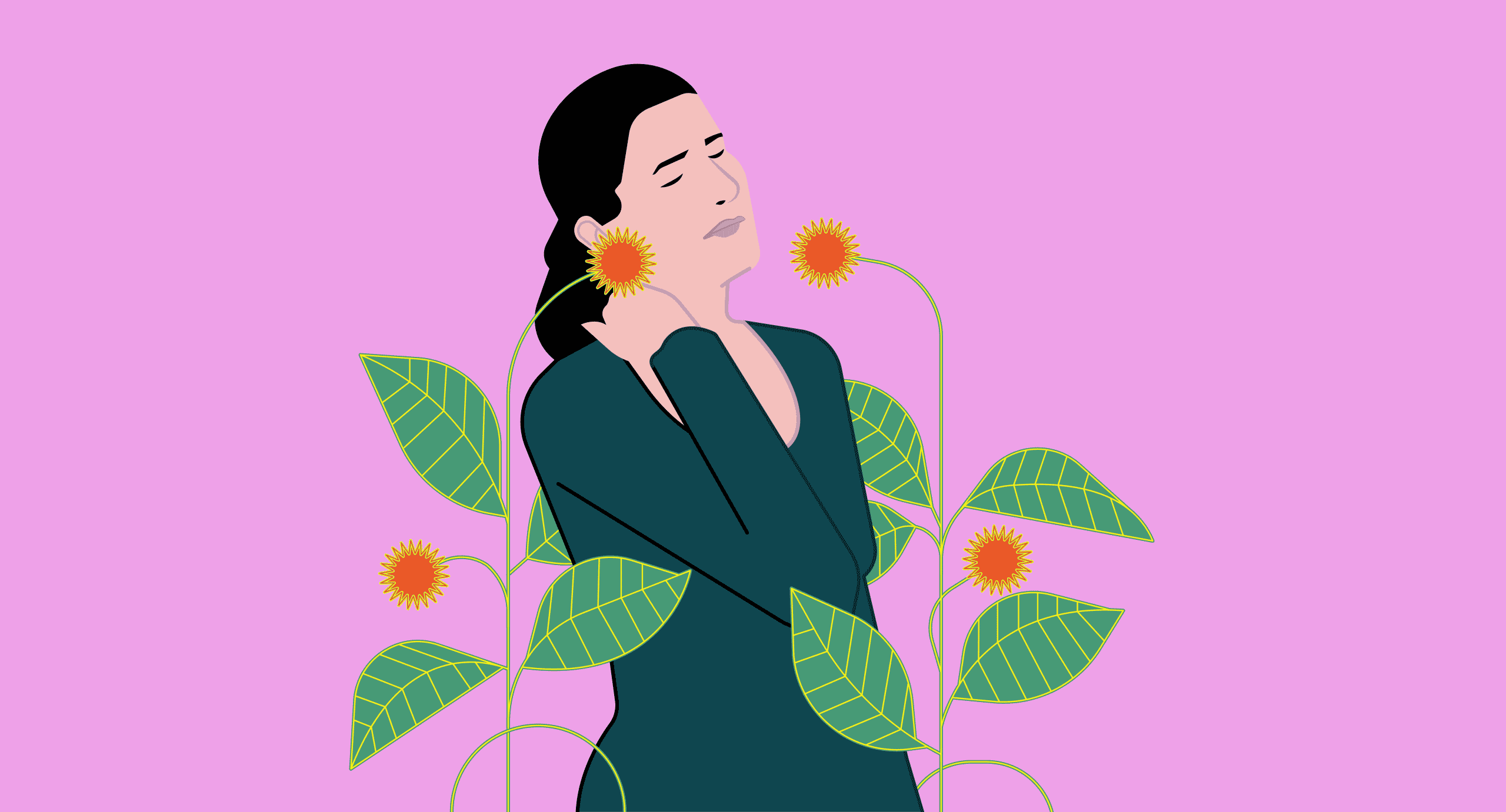What Is Kratom?
Kratom (Mitragyna speciosa) is a Southeast Asian herb that primarily grows in the rainforests of Indonesia, Thailand, and Borneo. It has been used for centuries — with few problems, we might add — to treat various ailments from diarrhea and fever to fatigue and pain [1].
Kratom is unregulated in most states in the United States, but some have chosen to regulate it or ban it altogether — leading people to assume it’s banned for being dangerous.
Let’s look at why some people believe kratom is unsafe, what the research says, the associated risks, and how to use it responsibly. Once you have the facts, you can decide if kratom is something you should consider trying (some people shouldn’t!).
Is Kratom An Opioid?
We’ll start by addressing most people’s biggest concern — and where most of the controversy comes from.
Kratom is actually an atypical opioid, but don’t get hung up on the “opioid” part. This is a good thing. It means kratom is excellent for pain relief but safer than typical opioids. [2]
The two main alkaloids in kratom — mitragynine and 7-hydroxymitragynine — interact with opioid receptors in the central nervous system, blocking pain signals and creating the relaxing and euphoric effects kratom is known for.
But kratom acts on other systems as well — such as adrenergic, dopamine, and serotonin receptors — which is what makes it atypical [3, 4]. Typical opioids only work on opioid receptors, making them more dangerous.
Despite this, some groups, including the media, intentionally misrepresent the facts to cause hysteria and push legislators toward banning kratom. [5]

Is Kratom Safe? What Does the Science Say?
Kratom is safe to use when taken responsibly [6] — we’ll go into detail on how to do that below — but don’t take our word for it. Here’s a glimpse of what the newest research shows.
1. Kratom Is Generally Well-Tolerated
Despite the many systems kratom interacts with, its side effects are quite mild. In fact, it’s considered a promising alternative to treat pain since it has “considerably fewer side effects” than regular opioids [7].
Its adverse effects — which we dedicate a whole section to below — are, for the most part, mild and go away as the kratom wears off. Most people don’t even experience them, including addiction — they’re mostly due to taking too much or using it too often (more than 5 grams or more than 22 doses a week) [8, 9, 10].
Plus, other factors can come into play — like the strains and products you use, if you take it on an empty stomach, combine it with other substances, or use a potentiator.
The most common issues are nausea, vomiting, dizziness, dehydration, and anxiety.
Of course, remember that everyone reacts differently, and there’s limited research on its long-term effects. Some case studies suggest kratom can cause liver or heart problems, but this usually is resolved when kratom use ceases, and there aren’t any clinical studies to fully back this.
If you have pre-existing health conditions, speak to your doctor before using kratom.
Related: What Does Kratom Feel Like?
2. Kratom Addiction Is Not Like Opioid Addiction
Opioids work by acting on one receptor. Kratom acts on many different ones, which limits the problems it can cause.
For example, kratom modulates the alpha-adrenergic system similarly to how lofexidine and clonidine do to help treat opioid withdrawal symptoms [11].
Also, many people never face addiction — even heavy users. Regularly using large amounts of kratom is probably the biggest factor in becoming dependent, but it’s not a given. Researchers haven’t narrowed down just what exactly makes some heavy users able to avoid addiction while others struggle, but previous opioid addiction is one factor. [11]
Based on user reports over the years, experts agree that 2 grams of unaltered kratom one or two times a day did not produce withdrawal to any significant degree. Long-term daily use of 3 grams or more of kratom was more likely to cause withdrawal if kratom use stopped. [11]
Related: Kratom vs. Opioids — How Do Their Withdrawal Symptoms Compare?
3. Kratom Is Unlikely to Cause Respiratory Depression/Overdose
Clinical studies show kratom is far less likely to cause respiratory depression than opioids [11]. Mitragynine is a partial mu-opioid receptor agonist, making it less potent. It doesn’t have the same impact on this receptor that drugs like morphine do.
Unlike other opioids, mitragynine doesn’t recruit β-arrestin — adaptor proteins with many cellular functions and is thought to be the driving force behind opioid-induced respiratory depression (OIRD). [12]
However, there’s debate on how much of a role β-arrestin actually plays due to current research — drug efficacy might have more to do with the risks. [13, 14]
Regardless of what causes OIRD, kratom is a biased mu-opioid agonist and has not caused significant respiratory depression in clinical studies [5].
Related: Can You Overdose On Kratom?
4. Kratom Has Low Toxicity
It’s hard to find the toxic level of a substance for humans, so we usually have to rely on estimates based on what’s toxic for animals. This method isn’t wildly accurate, but it’s a start.
Animal studies show mitragynine’s LD50 (median lethal dose) to be 200–960 mg/kg and 200–591 mg/kg for total alkaloid extract, suggesting it would take a huge amount of kratom to reach toxic levels, even in humans [15].
Large amounts of kratom in animals — equivalent to about 15 grams for a human — did not cause significant toxic effects or death. In humans, there have been no reports of respiratory depression or opioid toxic syndrome with kratom alone. [16]
There were no signs of toxicity in rats given doses up to 807 mg/kg and dogs given up to 920 mg/kg [17].
It would be very difficult to take a toxic amount of kratom — though not impossible. Large amounts of kratom cause nausea and vomiting, so you’d likely throw up before you reached a dangerous level. Still, don’t tempt fate. Keep the dosage low.
Related: Is Kratom Dangerous or Is the Fear Unwarranted?
5. Millions of People Use Kratom — And It’s Changing Lives
Kratom is a part of society in Southeast Asia, where it grows. It’s normal for people to have a cup of kratom tea in social settings, and there’s no stigma associated with its use. To date, there are no known deaths or extreme health events associated with kratom. [5]
People around the world turn to kratom for multiple reasons. Many claim kratom has saved their lives as they are able to break an addiction or function without pain or crippling anxiety; these stories are not rare or exaggerated.
Related: Kratom Statistics — Who’s Using Kratom & Why?
The Dark Side of Kratom: Risks & Side Effects
Kratom is a wonderful, safe plant. We wouldn’t advocate for it if we didn’t fully believe this. Unfortunately — just like with most other substances — there’s a big ‘but’ attached.
Even though kratom is 100% natural and largely regarded as safe, there are risks, and it has unpleasant side effects to watch out for.
Some researchers believe the issues we see in the West are due to poly-drug use, impure kratom, and concentrated products like extracts. Even the drying process can increase the levels of 7-hydroxymitragynine by 109-520% compared to the fresh leaves natives use. [6]
We’ll cover these in detail so you can make an informed decision about whether or not kratom is right for you.
1. Kratom Is Addictive
Addiction is the most important side effect to be aware of if you’re a kratom user. People who take kratom daily for extended periods may develop a physical dependence and find it hard to stop taking it without experiencing withdrawal symptoms.
Experts recommend limiting weekly kratom intake to fewer than five days and taking at least one week off every two months.
2. Kratom Can Cause Severe Interactions With Many Medications
Kratom can interact with other drugs in three ways: antagonistically, agonistically, or as a metabolic competitor.
Many drugs are metabolized by CYP450 enzymes, just like kratom is [6]. When two substances with similar metabolization are used together, the process is slowed down, causing one or both of them to be in the system long than they should be. This increases the risk of adverse effects and can be very dangerous in some instances.
Combining kratom with other sedatives or anything that slows down the nervous system — opioids, benzodiazepines, etc. — is the most dangerous.
Kratom also inhibits P-glycoprotein (P-gp) — transmembrane transporters that move compounds out of cells — which can cause significant drug interactions [16].
3. Kratom Can Have Unpleasant (Though Usually Mild) Side Effects
Side effects from using kratom are far more prevalent in people taking large doses above 10 grams. The best way to limit your chance of experiencing unwanted side effects is to control your amount and only take as much as you need to produce the desired effects. Many people make the mistake of thinking higher doses are better and wind up having a bad experience.
Remember that everyone is different, so you may experience side effects even when taking lower doses. Your age, weight, gender, and metabolism all affect how your body reacts to kratom, so take the time to experiment and find the optimal dose for you.
Below are some of kratom’s most common side effects and some tips for avoiding them.

Stomach Ache & Nausea
Some people complain of gastrointestinal discomfort from taking kratom. These people often take large amounts of red or green kratom and say they feel sick shortly after taking their dose. Luckily, feeling nauseous from kratom is usually short-lived and easily avoided by taking a smaller dose.
Diarrhea is also possibly a side effect of taking large doses, although it seems to be less common than nausea.
Lightheadedness or Dizziness
One of the most common side effects of kratom is lightheadedness or dizziness. Kratom is psychoactive and can alter users’ headspaces dramatically, making it challenging to disentangle pleasurable relaxation from feeling woozy at times.
Experienced kratom users suggest lowering your dose if you feel dizzy and switching strains if you still feel unsteady when taking less.
Also see: What Are the Kratom Wobbles?
Lethargy
Feeling lethargic is also a common complaint among kratom users, and it can be a sign that you need to take a break. Prolonged tiredness is one of the early signs of kratom dependence and is most often seen in people who take kratom every day. You should take a week off from using kratom if you start to feel unusually tired for an extended period.
Constipation
Some white strain users report becoming constipated when taking kratom regularly. The mechanism behind this side effect is unknown, but it seems less common among people taking red or green strains.
Anxiety
White strains also have a higher chance of triggering anxiety in some people, especially those prone to anxiety or who have a preexisting condition. Most people theorize that this is due to white kratom’s intensely stimulating effects at low doses. Experienced users suggest taking a red or green strain if they’re susceptible to anxiety.
Brain Fog
Brain fog is similar to lightheadedness and dizziness in that it can be hard to tell when it’s happening. Kratom can impair memory and make it difficult to focus on work, especially when taking a large dose of a strong red strain.
White kratom doesn’t cause brain fog nearly as often as red kratom, and many people use it to increase their focus and make them more productive.
Other Side Effects, Including Long-Term Ones
There are plenty of other side effects that are less common than those listed here. Of particular concern to some people is the potential for liver issues and hormonal imbalances. Anyone with known kidney problems, liver problems, or a hormonal imbalance should not take kratom. When in doubt, you should consult your doctor.
4. Research Is Limited — Especially In Long-Term Use
We’ve only begun to research kratom and its alkaloids, so much of what we know is inconclusive. The more we know, the more promise it shows, which further drives research.
One of the biggest problems is the inconsistency of the alkaloid content and lack of standardized dosing. There are averages, but, like with any herbal product, the content varies greatly, making it hard to give set answers on how much to take, etc.
Long-term side effects are the other problem. Those take a while, obviously, to gather data on. We can look at the statistics in Thailand and other areas where people have used kratom for the past century, but this research isn’t in a controlled setting.
For now, we have to go with what we know. Are long-term side effects possible? Sure, but it seems they’re kept to a minimum if kratom use is limited. It’s better to be safe than sorry. Use kratom wisely and responsibly — when and if you really need to.
Avoid kratom if you have underlying health problems unless you get cleared by your doctor.
5. Kratom Is Unregulated & Easily Adulterated
Once upon a time, when kratom first came to the West, there was a rush of people eager to make money off of this new craze. Kratom was — and mostly still is — unregulated, meaning there’s no one overseeing what’s being sold, how it’s processed, etc.
With this came users getting sick and some even dying due to kratom that had bacteria, mold, heavy metals, or, worse yet, other drugs to make the product seem more potent [18, 19].
Now, users are more aware, and vendors are more careful — but it’s not perfect, and there are still low-quality and even dangerous products on the market.
However, finding high-quality and safe kratom has never been easier. There’s a plethora of vendors that go to extremes to make sure their kratom is pure and potent. When you’re shopping for kratom, check for certification from the American Kratom Association or third-party lab testing. Online shops are best in terms of selection, ease, price, and freshness, but local stores can do in a pinch if you know what to look for.
Minimizing the Risks: 4 Tips On How to Use Kratom Safely
We’ve discussed safety tips throughout this article, but we’ll summarize them here so it’s all in one easy-to-see spot.
1. Never Use Kratom With Other Substances
Due to the risk of interactions, never use kratom with other substances. This includes other herbs or natural products, over-the-counter medications, prescriptions, and illicit drugs.
Our guide on kratom drug interactions can help you determine the risks of a specific substance, but it is not meant to replace your doctor’s advice.
2. Find the Right Dosage — And Stick With It
An overwhelming majority of kratom users take between 1 and 10 grams. Larger doses (5-10 grams) are more likely to cause unwanted side effects. Dosing kratom safely and effectively is about taking the proper amount, not as much as you can tolerate.
It’s also important to not increase the amount you take if the effects don’t feel as strong. You’ll build a tolerance after constant kratom use, so avoid taking more — it means it’s time for a break!
Specific dosing guidelines vary slightly between strains, but here are some general recommendations.
- Dose for stimulation: 1 to 3 grams
- Dose for relaxation: 3 to 5 grams
- Dose for pain relief: 6 to 10 grams
3. Take Breaks from It
One of the best ways to avoid tolerance and addiction is to take breaks from kratom, usually a few days a week and one full week each month.
Even if you start with small doses, eventually, you’ll need more, and you’ll have to dose more often. This is the path to addiction. Be diligent and, if necessary, try a kratom alternative.
4. Use Unadulterated, High-Quality Products
Unfortunately, following the above guidelines isn’t enough to protect you from low-quality, contaminated products. Less reputable companies will sell impure or possibly dangerous kratom to extend their profits even though it can harm their customers.
Bad batches of kratom have been found to contain significant levels of solvents, heavy metals, biological contaminants like mold and bacteria, and other drugs like morphine [20, 21]. It is essential that you only purchase kratom from reputable companies that have their products tested by third-party labs.
Our list of the top ten vendors can help you narrow down the selection.
Why Use Kratom? What’s It Used for?
Thanks to its high alkaloid content, kratom is very versatile and helpful in many ways. Here are the top reasons people use it [22] and how to make it work for you.
Kratom is dose-dependent, so you can’t just take a spoonful and get the results you want. It takes a little knowledge of how the plant works, which we’ll cover here.
1. Pain
Many people take kratom for pain relief due to its potent, natural analgesic qualities. The native people of Southeast Asia traditionally used kratom to ease their aches and pains and make them feel relaxed and content. Today, most people prefer taking kratom in a powdered form, either with water or in a capsule. Red strains and higher doses are most effective for pain.
Common Strains Used: Red Bali, Red Maeng Da
Common Dosage Used: 5-10 grams
2. Anxiety & Depression
Kratom is sometimes used to relieve anxiety and depression. It’s not a cure, but it can help make symptoms manageable.
White kratom strains work best for depression due to their euphoric effects and energy boost. Red strains are best for anxiety. In small doses, kratom can induce euphoria, helping people destress and improve their mindset.
Common Strains Used: Green Malay, White Sumatra
Common Dosage Used: 2-6 grams
3. Energy
Many people have replaced their morning coffee habit with a potent white strain and claim it gives them smoother, longer-lasting energy to tackle the day. White strains are the most energizing, though all strains are mildly stimulating in small doses.
Common Strains Used: White Maeng Da, Green Thai
Common Dosage Used: 2-4 grams
Related: Best 15 Herbs for Energy
4. Opioid Withdrawal
Finally, people recovering from opioid abuse may use kratom to help manage their withdrawal symptoms. Pain from opiate withdrawal can be unbearable, and kratom gives recovering addicts a fighting chance at pushing through the rough stages of recovery without relapsing.
Common Strains Used: Red Maeng Da, Red Thai
Common Dosage Used: 6-12 grams
5. Sleep
Another common use for kratom is to support sleep. Red or even high doses of green kratom can be very relaxing, and some users take it before bed to help them sleep.
Common Strains Used: Red Bali, Red Sumatra
Common Dosage Used: 5-10 grams

Related: Top 12 Herbs That Promote Sleep
How & Where to Buy Pure, Safe Kratom
Buying kratom online is by far the best way to get pure, high-quality products. Buying kratom online is safer, more affordable, and gives you access to a broader range of strains and products than buying it from a local shop.
Reputable online kratom vendors source their kratom directly from suppliers, giving them access to better prices and allowing them to set lower prices, saving you money. They also can reach a broader customer base than brick-and-mortar shops, which means they don’t need to factor spoiled products into their operating costs.
Having a direct relationship with a kratom supplier gives online kratom shops another advantage: access to third-party testing. Since online shops know where their kratom comes from, they can have random samples of their products tested for quality and safety at independent laboratories. Local shops usually sell someone else’s product and don’t purchase kratom in bulk from the growers.
Finally, online kratom retailers usually have more variety than local stores. Since their audience is country-wide, they can afford to carry niche items without worrying about them sitting on a shelf for months.
The three best online shops for buying kratom are VIP Kratom, Kona Kratom, and Star Kratom.
1. VIP Kratom

VIP Kratom
VIP Kratom specializes in selling premium kratom products and providing its customers with unparalleled customer service. Its prices are slightly higher than the other vendors, but customer reviews are overwhelmingly positive and indicate that the higher prices are worth the VIP treatment.
2. Kona Kratom

Kona Kratom
Kona Kratom is more affordable than VIP Kratom but still sells high-quality products. It focuses on offering a variety of top-notch kratom capsules and powders at reasonable prices. Many people use Kona Kratom as their go-to shop for its selection and value.
3. Star Kratom

Star Kratom
If speedy shipping is your number one concern, Star Kratom is the vendor for you. It offers 1–2 day shipping on most of its products and processes orders placed early enough on the same day. Star Kratom’s selection is a bit sparser than the other two companies’ selections, but its prices are excellent, and shipping times are unmatched.
Summary of Best Online Kratom Vendors
- Best choice for premium kratom: VIP Kratom
- Best all-around kratom vendor: Kona Kratom
- Best choice for fast shipping: Star Kratom

The Bottom Line: Kratom Is Safe If You’re Responsible
Kratom is generally considered safe as long as you use it responsibly. Experienced kratom users advise beginners to start slowly with low doses to see how their body reacts before taking larger amounts. They also recommend limiting weekly intake to only a few days, especially when starting.
Some people wrongly assume that kratom is an opiate due to its similar biological function and effects. This leads them to lobby for kratom restrictions under the pretense that kratom should be held to the same standards as dangerous opioids. Despite its similarities, kratom is not an opioid and is actually used to treat withdrawal in recovering opioid abusers.
The number one risk of using kratom is addiction, so users need to be especially careful to avoid developing dependence. Prolonged lethargy is the most common early sign of kratom addiction, so you should stop taking kratom immediately if you feel unusually tired. The best way to lower your risk of addiction is to use kratom sparingly, taking regular breaks to give your body time to recover.









